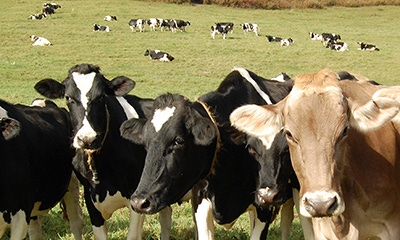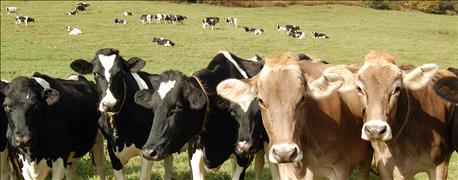February 18, 2016

While milk prices are relatively low, fairly low corn and soybean meal prices have somewhat eased the pain – except for Northeast dairy farmers who had to purchase hay to replace what was lost to wet weather in early 2015. So what will the milk “profit gods” have in store for 2016?
Dunn's call
As this is written, the 2016 futures market shows prices rising in the second half. Whether that occurs depends largely on dairy exports and domestic milk production.
The Chinese significantly reduced dairy product imports after accumulating enormous inventories in recent years. Fortunately, they’ve now drawn these stocks down substantially.

SWAMPED MILK PRICES: Due to regional market changes, rising production and global competition, processor plant capacity, particularly in the Northeast, is swamped with milk.
A bigger issue is that China is now the world’s third largest dairy producer. That’ll reduce its need for enormous future dairy imports. And another offsetting factor is that China is building a very large powdered milk facility in Kansas, which may have its production shipped to China.
The strong U.S. dollar continues to make our exports less competitive with other dairy exporting countries. There’s no reason to expect that to change, especially if the Federal Reserve’s recent increase interest rate increase is followed by more meaningful increases.
New Zealand’s dollar is unlikely to rise unless China starts buying dairy products again in earnest. Dairy is 29% of all of New Zealand’s exports. The Euro won’t appreciate unless the European Union’s many immigration problems with the flood of Middle Eastern refugees abate. Australia, the other major dairy exporting country, is as dependent on Asian buyers as New Zealand.

Jim Dunn
The Northeast is undergoing market pressure due to Midwest dairy expansion, which is swamping processors’ ability to sell that production. This has led to a lack of a market for some Northeast dairy production, and will continue to be a challenge.
Land O’Lakes’ establishment of a production base could spread to other cooperatives if export growth doesn’t broaden markets. As such, this could limit growth potential for this region’s milk producers, particularly for those wanting to expand for financial reasons.
World inventories of corn and soybeans are very large. Absent a serious weather event, there’s no reason to expect those feed prices to increase.
Dairy demand will be the major issue. Total demand in North Africa and the Middle East has been hurt by all of the trouble there. And, the EU is probably serving those markets since the Russian market is closed to them.
~~~PAGE_BREAK_HERE~~~
Overall, milk-producing costs should be reasonable in 2016. But the market it won’t be good. Dairy profits may be elusive.

Mark Stephenson
Stephenson’s call
Now that the medical community has declared a truce with butter, butter sales have been off the chart, and sales of high-fat dairy products have been strong. Even whole milk and creams have been increasing in a category that’s generally been in decline.
Even so, 2016 milk prices will average somewhat lower than 2015 levels. We begin the new year with growing cheese inventories despite robust domestic sales.
Strong domestic sales are necessary to maintain high milk prices, but are no longer sufficient. 2015 export sales started off representing about 16% of U.S. milk production. By year-end, exports declined to about 14%. That 2% loss kept downward pressure on our dairy product and farm gate milk prices.
The strongest El Niño of the last 50 years in the Pacific is giving the Northeast and Upper Midwest a much milder than normal winter. It’s also expected to give Oceania [Australia, New Zealand, specifically] a much drier 2016 than they’ve seen in many years causing low pasture yields and declining milk production.
While that’ll help the world work down some excess dairy product inventory, the EU is celebrating the end of milk quotas. Several EU countries already have increased milk production much more than New Zealand’s will decline.
The world’s two largest dairy product importers are experiencing economic problems. The loss of sales to China and Russia already has had a large impact.
China’s gross domestic product growth rate may still stronger than the U.S., but is much slower than it had been a few years ago. The Russian economy, too, has been devastated by economic sanctions, low oil prices and a large decline in the Ruble’s value.
I expect only modest 2016 growth in U.S. milk production with the same regional patterns as seen in 2015. The West will struggle with a higher basis for feed costs and lower milk prices. The Northeast and Upper Midwest will continue to challenge local plant capacity.
By the last quarter of this year, milk prices should show the beginning of a price rebound. The good news is that feed prices will remain well below levels of the last few years.
Dunn is an outlook economist at Penn State University. Stephenson, formerly at Cornell University, is director of dairy policy analysis at University of Wisconsin.
This is part of American Agriculturist’s exclusive 2016 Northeast Ag Outlook series, courtesy of Cornell and Penn State universities.
You May Also Like




